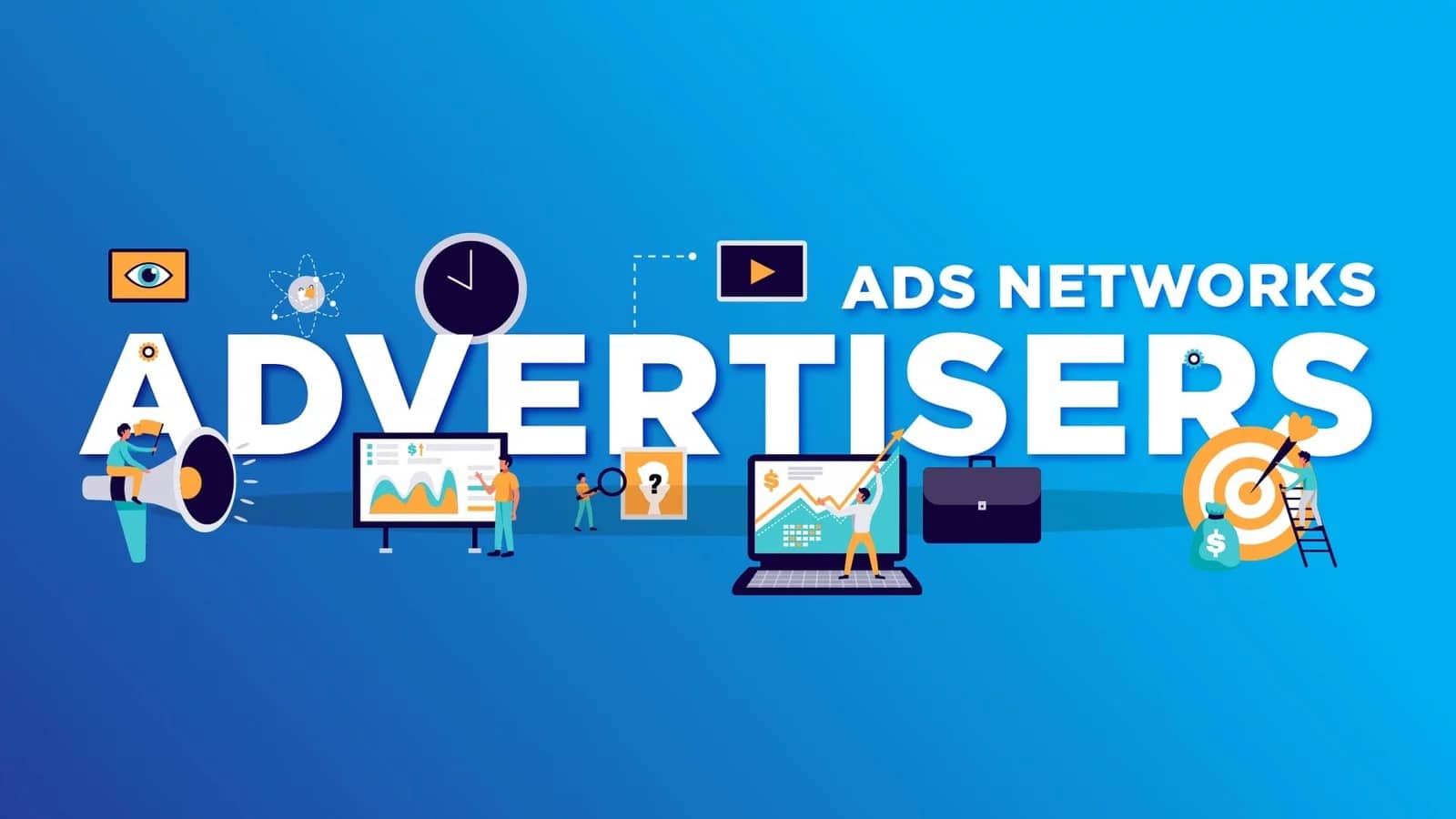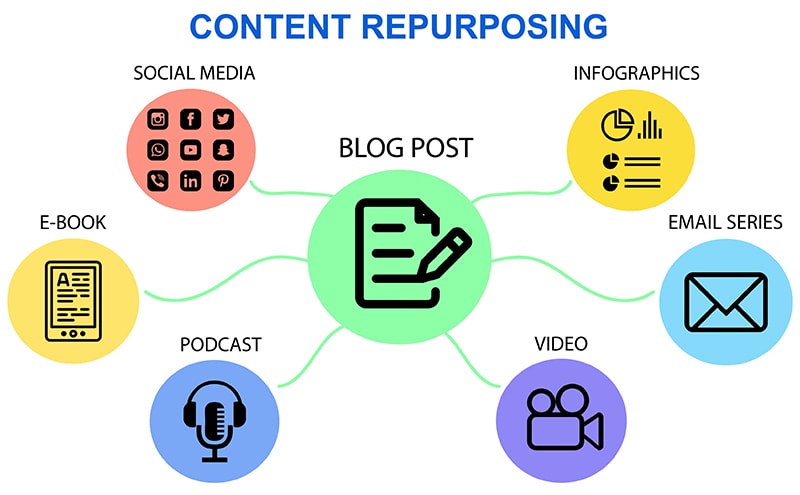Gone are the days of doubt; we are now very well living in the creator economy. With today’s creators, influencers, and community builders having more power than they have ever had in history, they even have a lot of ways through which they can monetize their work.
Yet, this is not to say it is a breeze. Whether bloggers, videographers, photographers, or content creators in general, everybody is trying to look for a new and effective means of making money through their work in the challenging digital era.
One of the few tried-and-true ways in which this has occurred is by way of display Ad networks. Finding the right network can help creators maximize their earnings while still offering a great user experience.
In this article, are the best ad networks for content creators in 2026, and they are built on the tools needed to create a seriously monetized strategy.

What Is An Ad Network?
The ad network provides a platform or an intermediary between the advertisers and publishers to allow the serving of advertisements on various websites or digital platforms. An ad network primarily operates to ensure trouble-free buying and selling of advertising space.
The ad network can be considered the middle ground between those publishers who seek to sell advertising space on their websites or platforms and the advertisers in need of such ad space.
These networks act as a channel between the advertisers and the right websites that match their targeted consumers and objectives, and vice versa. This makes it easier for an advertiser to find ad placements that match their goals, as well as for publishers to reach out to the advertisers whose ads resonate with their content and audience.
This opened avenues for bloggers and content creators to earn money from their content without having to actually negotiate with the advertisers themselves. Other methods, such as sponsored posts or affiliate marketing, are far less automated and require more work on behalf of a human than ad networks do.
By streamlining the processes and saving the creators a lot of time, taking away their stress in the process, ad networks are very different from these other methods of making money.
You can also read: Content Creator Economy: What Is It About?
Basically, ad networks work all the same, but the specific details depend on the type of ad network one is working with.
- Publisher Sign-up: This is done by first registering with the network. This is typically accomplished by applying to the network with your content or website for approval. Most ad networks have a minimum traffic threshold to get into their network. Followed by a review process that determines how your content fits their guidelines, based on quality, niche, and volume of traffic, the network accepts or rejects you.
- Ad Placement: Once the approval is successfully passed, the next step is to include advertisements on your site. How this is done depends on the network. Sometimes, it could be as easy as copying a given code snippet onto your website. In other cases, you will only need to let people know how much space you have, and then let the bidders take over in placing ads in your space. The ultimate goal is to have the ad network place ads on your site or within your content that will resonate with your audience and encourage clicks and impressions.
- Earn Display: Advertisers pay the ad network so their ads are shown. Whenever users on your site interact with these advertisements by clicking on them or by viewing them, you earn money. The earned amount is calculated depending on the structure followed in the type of payment model taken by the network.
- Payment: The ad network pays you your earnings through whatever payment option you have chosen. Sometimes, the network could deduct a commission; the rate depends on each network.
What Are The Different Types Of Ad Networks?
With the continued development of ad networks, here are the various types you might want to know:
Vertical Networks
These operate in some niches or industries so as to facilitate advertisers in reaching a very targeted audience. For instance, a vertical network could be an e-commerce or finance ad only, which makes it perfect for creators whose content covers both topics.
Premium Networks
Likewise, premium networks focus on high-quality advertising content and deal with only top publishers, creators, or highly-trafficked websites. Because of their focus on quality, targeted networks are in demand by advertisers who want to spend a good amount to display their ads on desirable websites.
Targeted Networks
These targeted networks are for advertisers who aim to reach very niche audiences or users who fall into extremely specific groups. Their business model focuses on precision targeting options: location and user behavior, among others. It is important to note that the ad network ecosystem is fluid, with new ones and innovations being developed consistently.
Niche or Inventory-Specific Networks
Like vertical networks, these also don’t deal in industries but in types of content. Examples would be video-only networks or podcast-only ad-serving networks.
Performance and Affiliate Ad Networks
These networks gear more towards user action rather than just ad display.
In such cases, the advertiser pays publishers when users finish taking certain activities that are involved with their advertisement content, be it signing up, registering for something, making a purchase, and so and so. That applies to affiliate ad networks, too, whereby through the affiliate links, creators are rewarded with commissions for sales they have generated.
How To Choose The Best Ad Network
Ad networks stand out as one of the simplest and most well-known avenues for content creators to earn income, which explains the abundance of options available.
However, it’s important to note that ad networks vary in quality, and not every one of them will align with your content, audience, and objectives.
Several factors should be taken into account when selecting the most suitable ad network for you:
- Audience and Niche: As a content creator, it’s essential to have a profound understanding of your audience and content niche. Some ad networks cater specifically to certain industries, areas, and user demographics. Conduct thorough research to ensure that the network and its advertisers align seamlessly with your audience and niche.
- Revenue Models: Take the time to comprehend the diverse payment models used by ad networks and identify the one that suits you best. Some operate on a revenue share model, while others follow a cost-per-mille (CPM) or cost-per-click (CPC) model. Certain networks utilize a cost-per-action (CPA) model, and some incorporate a combination of these. Choose the model that aligns most sensibly with your goals.
- Advertising format: Ad networks vary greatly in the ad types, size, and placements. Consider your preferences when it comes to ad types and placement, then look out for an ad network that offers the options that best resonate with your content.
- User Experience: User experience is probably more important, but as a content creator, the user experience that you will have with the particular advertising network you will be using becomes very important. Study the approach taken by different ad networks to the user experience and give priority to those committed to serving relevant and non-intrusive ads; this constitutes better audience satisfaction and, on top, increased revenues.
- Traffic Requirements: Most of the ad networks require the least traffic for inclusion; that is to say, in order to join, the website or platform should achieve some visitation count during a month. Not all networks are fit for small publishers, though others may work just fine for highly trafficked creators.
Best Ad Networks For Content Creators In 2026
Google AdSense
Google AdSense is a very good choice, especially for those just starting into ad monetization. It is owned by Google; it is one of the most utilized ad networks and is particularly favorable for beginners because of how easy it is to use.
AdSense makes the onboarding process that much easier since there is no minimum traffic requirement, and joining through a self-service platform is free. Once your application gets approved, implementing ads simply requires embedding a snippet of code into your website. This is further made simpler by the ‘Auto Ads’ feature, which auto-enables ad-serving across your site or automatically disables it on certain pages.
Google AdSense has display, text, in-feed, and in-article ad formats, and allows personalized ads through contextual and behavioral targeting.
However, it is not free of challenges. It’s tough to get approved because of the policies and guidelines provided by Google, and even when approved, there is always a risk of account suspension for any kind of violation.
You have to have at least $100 in earnings before AdSense will pay you. The money is decent with AdSense, but perhaps the revenue potential isn’t as huge as with some of these other platforms.
Revenue Share: 68% for site owners / 32% for Google AdSense.
Payment Model: CPC (Cost Per Click).
Traffic Requirements: None.
Key Features:
- Responsive Ads: AdSense automatically adjusts ad units to suit the user’s device, ensuring an optimal user experience.
- Insights and Analytics: Detailed performance reports provide information on ad performance, allowing you to optimize placements. Trackable metrics include views, clicks, revenue, and more.
- Ad Review Center: Exercise control over the ads displayed on your site by reviewing and approving or denying specific ad categories.
Media.net
Another alternative to Google AdSense, this one is powered by Yahoo! and Bing: Media.net. Being a part of this affiliation opens you up to a huge pool of advertisers; hence, it’s a good complement to your AdSense work.
What sets Media.net apart is that it focuses on contextual ads. Instead of reaching out to users based on interest, it places ads highly relevant to the content on your webpage for better user interaction and CTRs. Example: Suppose your blog is about nice beaches; then, Media.net will show beach towel-related ads to your viewers.
Like AdSense, joining Media.net is free, and there are no traffic requirements. It has a wide-ranging ad inventory, optimized for mobile. Perhaps most importantly, the platform provides additional support through real account managers who help with setup, troubleshooting, and optimization significant benefit over many other services.
Yet, one does need to be aware of a few cons: there is an approval process that is pretty laborious, the way one achieves optimization certainly takes time and knowledge to learn, the minimum payout amount is $100, and there are only two ways to receive the payment: Payoneer and wire transfer.
The sites that do well on Media.net are those that have very specific niches, including health, technology, and finance. Sites outside these verticals may receive relatively lower revenues when compared with other platforms.
Revenue Share: Not disclosed.
Payment Models: CPC (Cost Per Click), CPM (Cost Per Mille).
Traffic Requirements: None.
Key Features:
- Dynamic Optimization: Media.net maximizes the value of your impressions by optimizing between ad types that are deemed most effective for your audience.
- Sizeless Ads: Publishers on Media.net have the flexibility to design ads with entirely custom sizes to suit their site.
- Sticky Ads: The platform provides ads that adhere to the screen as users scroll or in-content ads that are automatically displayed within your content, enhancing viewability.
You can also read: AdSense Changes the Revenue Share Structure for Publishers
The Raptive (Formerly AdThrive)
Until recently known as AdThrive, Raptive has grown to be recognized as one of the most in-demand ad networks amongst content creators, especially in the travel, lifestyle, food, and parenting verticals.
That reputation comes from the fact that it has been able to realize huge revenue increases for websites through optimized ad placement and performance. Most notably, Raptive considers itself a publisher-first company-creators get paid no matter if an advertiser doesn’t pay Raptive.
Among the benefits the Raptive platform offers to creators are: a support team, flexibility in payments, suggestions of websites for a given placement, hosting and monetization of videos, and an easy-to-use dashboard displaying your earnings and impressions.
There are, however, some redeeming factors: Raptive has a very high barrier to entry-a minimum of 100k page views for qualification-which may be beyond the grasp of relatively new and small-scale creators. The content must focus on English, and the majority of the traffic needs to come from the US, CA, UK, AU, or NZ. There are some reports that it can be quite high in density, which affects user experience.
Revenue Share: 75% to site owners / 25% to AdThrive.
Payment Model: CPC (Cost Per Click).
Traffic Requirements: 100,000 pageviews per month.
Key Features:
- Auto Ad Placement: Raptive’s algorithms automatically position ads for optimal performance.
- Experimentation: Creators can conduct customizable A/B ad testing with various ad types and placements.
- Learning Resources: Raptive provides a selection of expert webinars, tutorials, and articles to assist creators in enhancing their earnings.
Adcash
Adcash is a user-friendly, self-serve ad network for both buyers and sellers; its audiences are found all over the world. It is known to provide several traffic sources and also to provide varied ad formats, some of which include pop-under, native ads, interstitial, display ads, banners, push notifications, and many others.
The global reach of Adcash runs to users in over 196 countries, creating room for a big leeway for online content creators. Add to this more advantages that Adcash can offer-real-time performance reporting, optimization tools, and most importantly, anti-adblock technology. It keeps them earning from the visitors to their website who apply ad-blocking tools to their content.
Setting up with Adcash is relatively easy, plus it has different ways to pay you. Here, on one hand, it includes the possible negative sides: possible negative impact on the user experience of some ad formats, such as interstitials or pop-unders; a minimum payout threshold of $25 USD/EUR; probably below the market average for CPM rates.
Revenue Share: Not disclosed.
Payment Models: CPC (Cost Per Click), CPM (Cost Per Mille), CPA (Cost Per Action), RevShare (Revenue Share), dynamic CPM.
Traffic Requirements: None.
Key Features:
- Anti-Adblock Technology: Allows the display of ads to users utilizing ad-block tools.
- High Fill Rate: Maintains consistently high fill rates, enabling the monetization of more impressions.
- Live Reporting: The Publisher Platform Reports section in Adcash facilitates real-time tracking of revenue.
Amazon Publisher Services
Amazon Publisher Services is a set of tools that assist publishers and content creators in effectively managing their ad inventory and securing better monetization of the same.
Investing in this service lets one use the broad advertising ecosystem that Amazon owns, as well as its cloud-based solutions for a transparent ad marketplace, a unified ad marketplace, and shopping insights with Amazon’s robust ad demand that lets publishers maximize their revenue.
On the other hand, Amazon Publisher Services would be more suitable for larger creators with higher website traffic since this platform demands at least 5,000 unique visits daily. Being complex, it would be a bit trouble to learn on the platform, while implementation may take some time and technical know-how, especially for new starters.
Revenue Share: Not disclosed.
Payment Model: CPM (Cost Per Mille).
Traffic Requirements: 5,000 unique daily visits.
Key Features:
- Transparent Ad Marketplace (TAM): Amazon’s server-side header bidding solution adopts a cloud-based approach, enhancing speed and efficiency.
- Unified Ad Marketplace (UAM): Allows creators to effectively manage multiple demand partners, consolidating demand sources to secure the best bids for their inventory.
- Shopping Insights: A unique feature that provides data based on shopping behaviors, enabling publishers to optimize their delivery strategies.
You can also read: How to Create PPC Text Ads That Are Trustworthy and Clickworthy
PropellerAds
PropellerAds is among the friendliest ad networks for any beginner, basically covering all one needs. Its core business involves display ads, and it’s great since it is very easy to work with due to its more user-friendly interface. To join, it’s pretty easy; there aren’t any minimum traffic requirements.
This platform opens its broad arms to publishers from different parts of the world, with various ways to monetize your inventory. For this reason, PropellerAds supports a wide range of ad formats, including pop-ups, push notifications, native banners, interstitials, and many others.
PropellerAds is also very keen on ad quality and ad content, using both technology and manual checks. Because of this proactive approach, it has been able to take away all the unsafe and suspicious content and hence ensure that appropriate ads go to the proper audience. Other benefits of PropellerAds include fully monetized inventory, flexible payment options, account managers, and optimization tools.
On the flip side, PropellerAds has been found to be lenient toward its advertisers, which raises a few red flags regarding the quality of advertisements and how intrusive they are. PropellerAds focuses mostly on display ads, which to some users may be a consideration.
Revenue Share: Not disclosed.
Payment Models: CPM (Cost Per Mille), CPC (Cost Per Click), CPA (Cost Per Action), CPI (Cost Per Install), and CPL (Cost Per Lead).
Traffic Requirements: None.
Key Features:
- Real-Time Reporting: Allows instant tracking of ad performance.
- Account Manager: Limited to larger publishers, but provides dedicated assistance for addressing concerns.
- Referral Program: Enables users to generate additional earnings by referring fellow creators to the network.
Infolinks
Infolinks is an ad network that works with leading advertisers such as Amazon, Microsoft, and eBay.
It innovates and specializes in “intent-driven” banner ad formats, integrating these ad formats together with the content of websites to fight off banner ad blindness. Some of the ad types included are InFold, InText, InTag, InFrame, and InScreen ads.
Infolinks are also a good option for those who want to give an extra layer to their traditional banner ads or want to replace traditional banner ads. There is no minimum limit on traffic; creators of any size can join, and it is rather simple to set up. Notably, Infolinks ads can be used on the same website as AdSense ads to maximize earnings with a combined approach.
On the other hand, and like most ad networks, there might be some effect on user experience because of Infolinks; its non-traditional formats are less intrusive in relation to prominent banners or pop-ups.
One thing to take into consideration is that Infolinks has a threshold minimum payout of $50, limited options for customization when compared to certain platforms, and does not always have the same earning potential as certain other networks.
Revenue Share: 70% to publishers / 30% to Infolinks.
Payment Models: CPM (Cost Per Mille), CPC (Cost Per Click), CPA (Cost Per Action), CPV (Cost Per View), CPI (Cost Per Install), Auction.
Traffic Requirements: None.
Key Features:
- InText: Highlights relevant keywords in content, displaying an ad when hovered over.
- InFold: Overlay ads are often positioned as a footer ad in response to search intent.
- InTag: Pulls together valuable keywords into a tag cloud on the page, revealing relevant ads on user hover.
- InFrame: Banner ads occupying the margins of the website’s page, utilizing previously unused screen space.
Monumetric
Offshoot of The Blogger Network, Monumetric positions itself as a very viable option for publishers whose traffic meets or exceeds the minimum threshold of 10,000 pageviews per month.
Monumetric boasts one of the largest pools of advertisers out there and has impressive earning potential. It offers a range of ad formats that creators can choose from to best match their audience and content preferences.
Dynamism is probably one of the salient features of Monumetric. Instead of displaying a single ad in one user session, it constantly delivers multiple related units based on the audience.
This is where the biggest draw comes in: personalized service offered to content creators, bloggers, and publishers who make use of Monumetric. For this very reason, the Monumetric team has in place dedicated support to understand your goals, help you come up with a plan for ad revenue, and even set it up for you.
On the other hand, keeping in mind certain drawbacks like minimum traffic and one-time $99 setup fees, which are waived for people with more than 80,000 monthly page views, Monumetric operates on a net-60-day payout schedule with a minimum payout of $10. Most importantly, it supports only WordPress and Blogger websites.
Revenue Share: Up to 70% to publishers.
Payment Model: CPM (Cost Per Mille).
Traffic Requirements: 10,000 pageviews per month.
Key Features:
- Dynamic Ads: Monumetric offers dynamic ad placements based on audience and content dynamics.
- Managed Ad Platform: The company provides hands-on support, overseeing the placement and management of ads on behalf of creators.
- Personal Support: One-on-one attention from the Monumetric team, aiding in the development of a customized ad strategy for your blog.
Taboola
Taboola leads the pack in content recommendation and suggestion, but what does that all really mean?
Picture this-scanning a blog or an article and hitting a section at the bottom suggesting other articles or videos from outside sources that might be of interest to you. These are called native ads, or sponsored links, and are generally dealt with through an ad network such as Taboola.
In Taboola Publisher Sign-up, the publisher or any creator allows the network to display ads in the form of native content suggestions, either articles or videos. This format is a form of advertising that totally blends into the content of your website for a more organic user experience compared to intrusive banner ads.
Users can filter the type of content displayed to their viewers, and Taboola offers ease of implementation with good earnings. However, Taboola has one major flaw: a fairly high minimum traffic threshold for signing up. It requires that your blog generate at least 500,000 page views every month. If this number is not reached, you are not alone.
For the qualified ones, please note that some of the content suggested on your website may not be quite fitting, or perhaps very similar to spam.
Revenue Share: 50% to publishers / 50% to Taboola.
Payment Models: CPC (Cost Per Click), CPM (Cost Per Mille).
Traffic Requirements: 500,000 pageviews per month.
Key Features:
- Native Ad Format: Ads seamlessly blend with your site’s content, minimizing disruption to users.
- User-Friendly Interface: Taboola’s platform is user-friendly and easy to navigate.
- Content Discovery Engine: Taboola’s algorithm selects content recommendations based on the audience’s interests, ensuring the best suggestions are made.
You can also read: 7 Great Principles of a Good Web Design
Revcontent
Want to jump into content recommendation but just can’t meet Taboola’s traffic requirements? Enter Revcontent!
By offering a more reasonable minimum of 50,000 pageviews per month, Revcontent is a more reachable option for bloggers and content creators. Although not quite as massive in size, Revcontent is a strong competitor to Taboola with a tight focus on performance and quality.
What differentiates Revcontent from the competition is the wide variety it offers in terms of personalization for publishers, thereby allowing them to rest assured that native ads will perfectly complement the design and branding of their site. Placements range from the bottoms of blog posts to newsletters, video advertisements, and more.
With its strict way of approval process, Revcontent guarantees quality content and suitable placements. While the minimum of traffic is more ‘approachable’ compared to others, reaching that minimum still requires a good amount of traffic, and it may be hard for some to get through the approval process.
Noteworthy, too, is the fact that the minimum payout rate is maintained at $100, even though Revcontent is not as big as Taboola and Outbrain.
Revenue Share: 80% to publishers / 20% to Revcontent.
Payment Models: CPC (Cost Per Click), CPM (Cost Per Mille).
Traffic Requirements: 50,000 pageviews per month.
Key Features:
- Widget Customization: Empowers publishers to customize the appearance on their site.
- Content Recommendation Technology: Uses a proprietary algorithm to ensure relevant and engaging recommendations.
- Viral Content Discovery: Enables publishers to promote potentially viral content, maximizing revenue opportunities.
Final Thought
The major challenge that each content creator, blogger, or publisher has to face is choosing the correct ad network.
Now, when one learns about various models of earning money, how it is paid, and understands each of them concerning intricacies, pros, and cons, it makes the choice hard to make.
What matters most is that the chosen platform(s) align with your goals and principles. You need to define what matters most to you, ad quality, user experience, and payout frequency included, should be reflected and prioritized in the ad network you opt for.
Whether you are a new blogger starting your journey with monetizing or an experienced creator who seeks to reassess his/her revenue strategy, we trust that this guide may equip you with the knowledge to make well-informed decisions to optimize your earnings.
![]()












